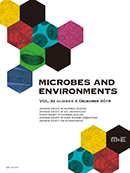Volume 38, Issue 1
Displaying 1-8 of 8 articles from this issue
- |<
- <
- 1
- >
- >|
Regular Paper
-
Article type: Regular Paper
2023Volume 38Issue 1 Article ID: ME22079
Published: 2023
Released on J-STAGE: March 18, 2023
Download PDF (7995K) Full view HTML
Short Communication
-
Article type: Short Communication
2023Volume 38Issue 1 Article ID: ME22102
Published: 2023
Released on J-STAGE: March 15, 2023
Download PDF (360K) Full view HTML
Regular Paper
-
Article type: Regular Paper
2023Volume 38Issue 1 Article ID: ME22072
Published: 2023
Released on J-STAGE: March 07, 2023
Download PDF (752K) Full view HTML
Short Communication
-
Article type: Short Communication
2023Volume 38Issue 1 Article ID: ME22077
Published: 2023
Released on J-STAGE: March 01, 2023
Download PDF (2425K) Full view HTML
Regular Paper
-
Article type: Regular Paper
2023Volume 38Issue 1 Article ID: ME22093
Published: 2023
Released on J-STAGE: March 01, 2023
Download PDF (481K) Full view HTML
Regular Paper
-
Article type: Regular Paper
2023Volume 38Issue 1 Article ID: ME22071
Published: 2023
Released on J-STAGE: February 09, 2023
Download PDF (695K) Full view HTML
Regular Paper
-
Article type: Regular Paper
2023Volume 38Issue 1 Article ID: ME22044
Published: 2023
Released on J-STAGE: February 09, 2023
Download PDF (1980K) Full view HTML
Regular Paper
-
Article type: Regular Paper
2023Volume 38Issue 1 Article ID: ME22056
Published: 2023
Released on J-STAGE: January 26, 2023
Download PDF (3202K) Full view HTML
- |<
- <
- 1
- >
- >|
